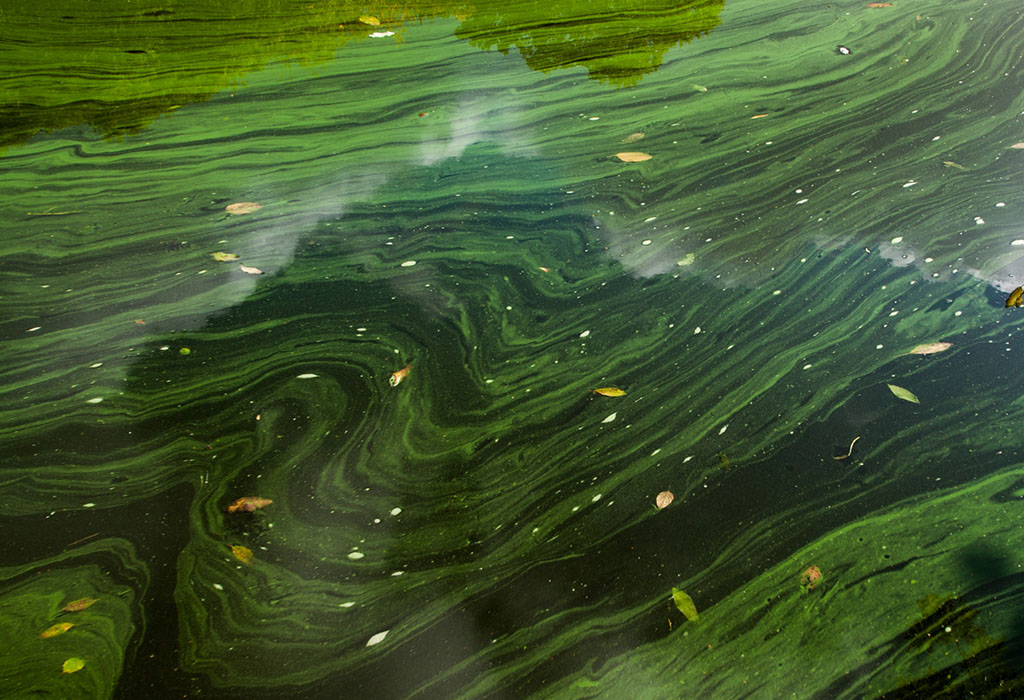Blue-green algae or Cyanobacterial toxicity may have been the cause of death on the 18th August 2021 of a family and their dog that were hiking in the Sierra National forest in California in the United States of America.
Cyanobacterial toxins are produced by prokaryotic life forms that were in fact the first life found on our beloved planet earth – possible fossil examples have been found in rocks that are around 3500 million years old. An introduction to cyanobacteria can be found here.

The occurrence of cyanobacterial populations can create significant water quality problems, and cyanobacterial species are capable of synthesizing a wide range of odours, noxious compounds or potent toxins.
The cyanotoxins are a diverse group of compounds, both from the chemical and the toxicological points
of view. Cyanobacterial toxins are hepatotoxic, neurotoxic, cytotoxic, dermatoxic and irritant toxins. Toxic blooms of cyanobacteria have been associated with rapid death in a wide range of domestic mammals (cattle, sheep, swine, dogs, bats, mice, guinea pigs and humans) as well as wildlife species (zebra, wildebeest, white rhinoceros, impala, lion and cheetah).
| Toxin Group | Toxin | Origin |
| Hepatotoxins (Liver) | Microcystins | Microcystis, Anabaena, Oscillatoria, Nostoc, Planktothrix, Anabaenopsis, Hapalosiphon |
| Nodularins | Nodularia | |
| Cylindrospermopsins | Raphidiopsis / Cylindrospermopsis, Aphanizomenon, Anabaena, Raphidiopsis, Umezakia | |
| Neurotoxins (Nervous system) | Anatoxin-a | Aphanizomenon, Anabaena, Raphidiopsis, Oscillatoria, Planktothrix, Cylindrospermum |
| Anatoxin-a(S) | Anabaena | |
| Saxitoxin | Aphanizomenon, Anabaena, Planktothrix, Cylindrospermopsis, Lyngbya | |
| Dermatotoxins (Skin) | Lyngbyatoxin-a | Lyngbya, Schizotrix, Oscillatoria |
| Aplysiatoxin | Lyngbya, Schizotrix, Oscillatoria | |
| Endotoxins | Lipopolysaccharides | All cyanobacteria |
Neurotoxic blooms have been associated with sudden death in dogs swimming in contaminated rivers. All mammals are susceptible to poisoning by these toxins, which act very rapidly, causing paralysis. Affected animals are usually being found dead near the contaminated water source. Those seen alive have severe breathing difficulty followed by sudden collapse and death.
The cylindrospermopsin producing cyanobacteria do not always float on the surface of the water and can be distributed through the water column and therefore not visible. This is of significance when analyzing water sources for potential toxicity since therefore the water samples need to be collected at various levels through the water column and not just from the surface.
Click to learn more on how to stay safe from cyanobacteria. It is interesting to note that boiling water does not help and only serves to concentrate the toxins.
Acknowledgement
Dr R D Last
Specialist Veterinary Pathologist